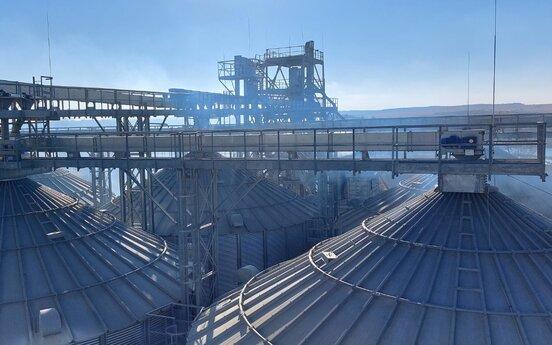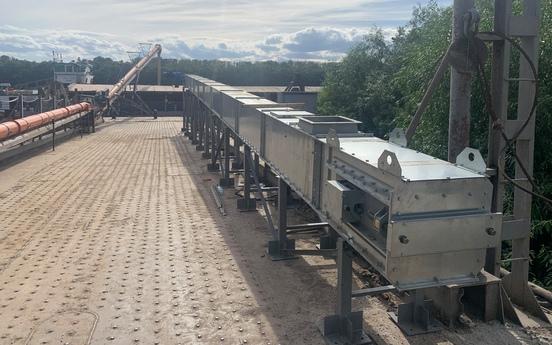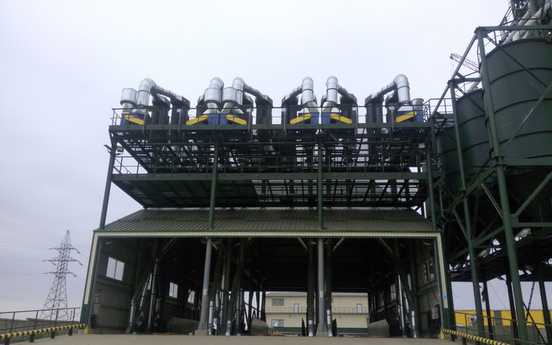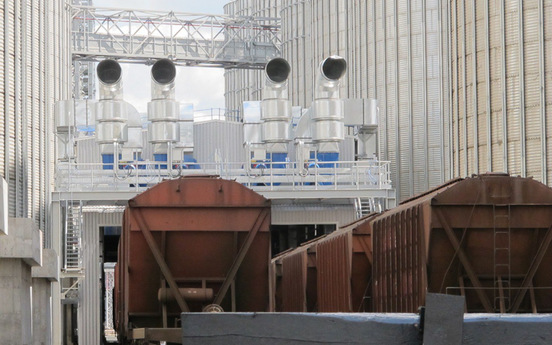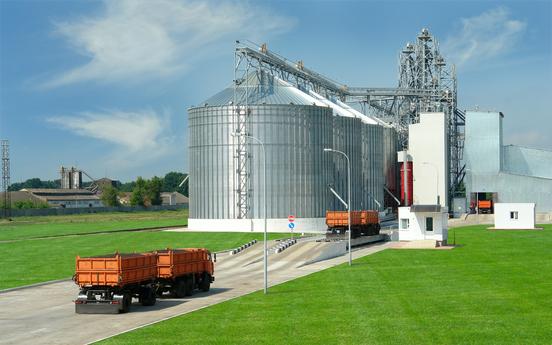Types of grain storage: advantages and disadvantages of warehouses and silos

In the agricultural cycle, grain storage is an important stage. The choice between a warehouse and a silo determines the quality of the crop, the efficiency of operations and the maintenance budget. Today, we will look at the main types of storage facilities, what is a silo, compare the advantages of different types of warehouses and their disadvantages, and help you determine which grain storage facility to choose.
What is a silo and grain warehouse?
A silo is a vertical container for long-term storage of products. It provides protection against moisture and pests.
A grain storage warehouse is a horizontal building or hangar where crops are stored in bulk or in containers. Grain warehouses can be floor, semi-floor or hangar type.
Main types of grain storage facilities
- Floor grain warehouses, where products are poured directly onto a horizontal, inclined or recessed floor;
- Bunker and silo storage facilities, with stationary partitions for simultaneous storage of several crops with gravity feeding of grain;
- Elevator-type (vertical cone-shaped tanks with full mechanization – receiving, cleaning, drying, accounting and storage, often installed in complexes).
- Grain storage sheds;
- Polyethylene sleeves, i.e. mobile sealed bags that are deployed directly on the field or storage site. Dry products are loaded into the open end of the sleeve using a screw or elevator.
Comparison of warehouses and silos for grain storage
A comparison of warehouses and silos for storing crops demonstrates two fundamentally different concepts of space organization and technological support. For example, in floor warehouses, where grain is stored horizontally, it is easy to organize several zones for different crops thanks to mobile partitions, which is important for small-seeded or specialized batches. It is worth mentioning the advantages and disadvantages of warehouses and silos.
Advantages of grain warehouses
- Flexible zoning: the floor warehouse can be divided into separate compartments for different crops.
- Possibility to store small-seeded crops that are not suitable for large containers.
- Accessibility of construction: the warehouse can be built quickly and affordably.
- The surroundings of a large storage facility: modern hangars are ideal for mass storage with a low risk of grain damage.
Disadvantages of grain storage warehouses
- High cost of loading: floor storage requires manual labor or mobile equipment.
- Difficult to control parameters such as temperature or humidity.
- Low storage density: a large grain storage facility takes up more space than a group of metal silos.
- Insufficient automation of technological processes.
Advantages of grain silos
- Efficient use of the territory: silos allow you to store large volumes on a small area.
- Mechanization and automation of loading and unloading processes.
- Tightness: protection against pests, moisture and dust.
- Control of modes: ventilation and thermal protection in metal silos ensure the stability of product quality.
Disadvantages of grain storage silos
- High cost of installing silos and silo-type warehouses.
- Risk of moisture condensation on the walls of metal silos and moisture formation inside.
- Corrosion of metal structures requires regular maintenance.
- Injury to goods when falling from a great height into a silo-type grain warehouse.
Which storage to choose?
When deciding whether to choose a traditional grain warehouse or invest in modern grain storage silos, Grain Capital recommends taking into account several factors:
- Harvest volumes
- Shelf life
- Available budget
- Site conditions
First, the volume of the harvest determines the scale of the infrastructure. If you have received several hundred tons of products and plan to sell them during the season, a floor warehouse with mobile zoning will allow you to flexibly distribute batches. For large-scale production or cooperatives with thousands of tons of crops, a grain silo will be more efficient, as it can hold large volumes in a minimal area and automates loading and unloading operations.
Secondly, the shelf life has a significant impact on the choice. Short-term storage of grain prior to sale or processing is quite possible in a warehouse, where it is easier to control humidity and temperature manually. When you need to guarantee the quality of the crop for several months or even years, ventilated or heat-protected silos are the best solution. They maintain a stable microclimate, so product spoilage is minimized.
The budget and the area of the site dictate technical limitations. For example, on narrow or leased plots, compact silos are more cost-effective because they can store many times more products than a horizontal warehouse of the same volume. On the other hand, if the area allows, the construction of a floor warehouse leaves room for gradual expansion and installation of additional mechanization equipment.
Conclusion
Grain storage facilities and silos have their advantages and disadvantages. If you need to quickly organize a grain storage facility with a limited budget and space, choose a floor storage facility or grain storage hangars. For automation, minimization of labor costs, and preservation of quality during long-term storage, metal silos or grain storage silos in an grain elevator are optimal. Choose one type of storage or another based on the volume of the harvest and the duration of storage.
As a result, the choice depends not only on the budget, but also on the area of the site, the type of grain crop, the storage period, and the requirements for automation.


